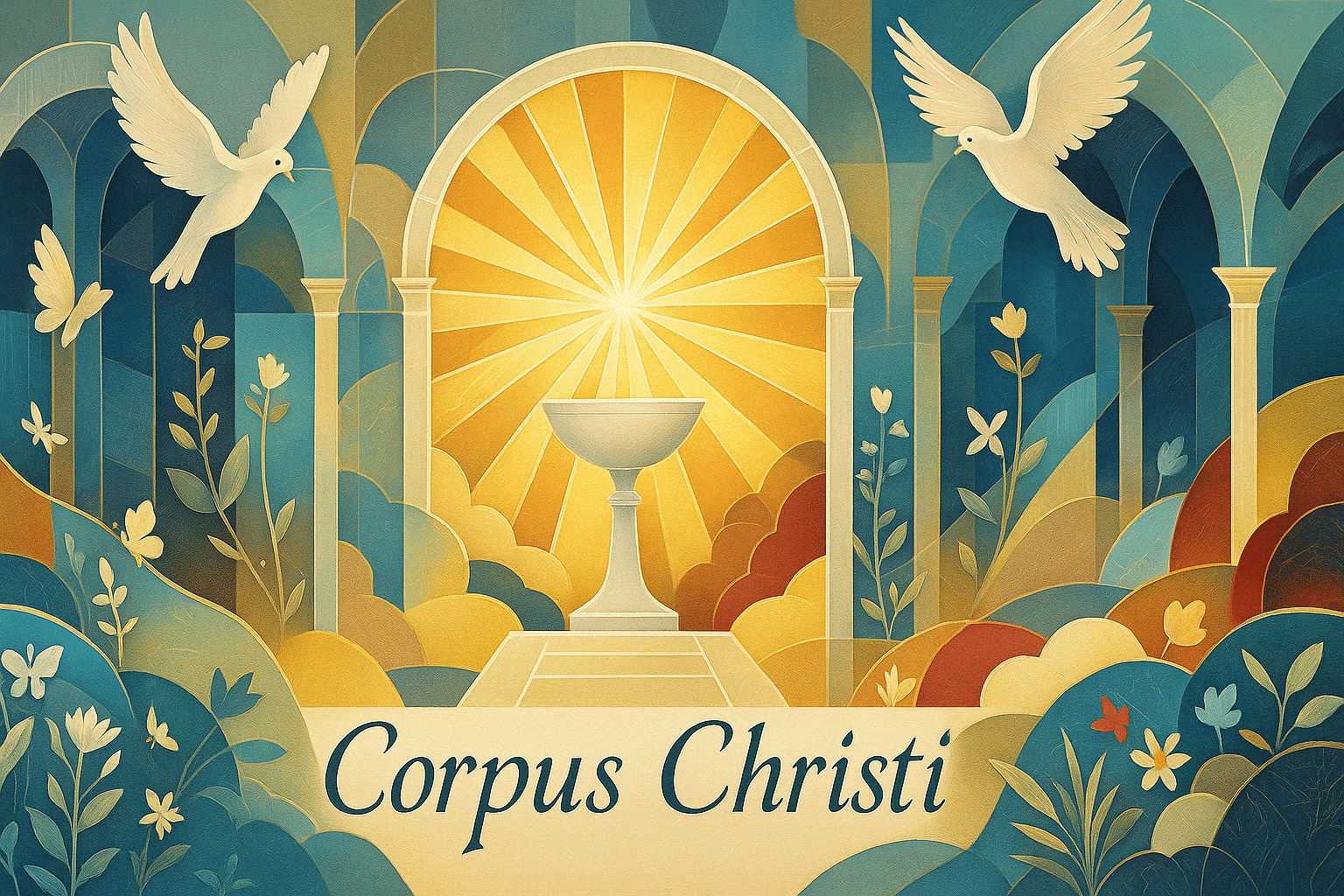What is Corpus Christi?
Corpus Christi is held every year on the Thursday after Trinity Sunday and is celebrated in many countries with Catholic traditions, including Spain, Portugal, Poland, Germany, and parts of Latin America. The day honours the belief in the real presence of the body and blood of Jesus Christ in the Eucharist. The name means “Body of Christ” in Latin.
Corpus Christi is a public expression of faith. It is best known for processions where the consecrated host is carried through the streets in a monstrance. These processions are often accompanied by music, flowers, banners, and traditional dress. It is a moment when belief becomes visible, and sacred ritual meets public space.
In the Netherlands, Corpus Christi is mainly celebrated in the south, especially in Limburg and parts of Brabant. Parishes organise special Masses, followed by processions through the town or village.
History and Origin
The feast of Corpus Christi was established in the 13th century. It was inspired by visions received by Saint Juliana of Liège, a Belgian nun who strongly believed that the Eucharist deserved its own feast. Her vision was later supported by theologians and Pope Urban IV, who instituted the day officially in 1264.
The feast responded to theological debates about the nature of the Eucharist. It aimed to affirm belief in the real presence of Christ in the consecrated host. Over time, Corpus Christi developed into one of the most visually rich and community-centred celebrations in the Church calendar.
The processions, first introduced in the Middle Ages, allowed for the Eucharist to be carried beyond church walls. These outdoor rituals became a blend of devotion, culture, and local identity. Today, traditions vary by country but the core message remains the same: honouring Christ in the sacrament.
Who participates in Corpus Christi?
- Catholic clergy: Priests and bishops lead Mass and processions, carrying the host under a canopy.
- Parish members: Local churchgoers prepare altars, decorate the streets, and take part in the celebrations.
- Choirs and musicians: Music groups accompany the procession with hymns and sacred songs.
- Children and families: Young children often wear white and scatter flower petals during the procession.
- Religious communities: Monks, nuns, and lay groups walk in organised sections to express their devotion.
Slogans and Themes
Corpus Christi celebrates the mystery of the Eucharist and the presence of Christ in the world. Themes often include “Bread of Life,” “Christ Among Us,” and “Faith in the Streets.” The focus is on reverence, unity, and gratitude for the sacrament. It is a feast of both devotion and joy, turning the public square into sacred space.
Colors, Symbols and Patterns
Colors
- White: Symbol of purity, used for vestments and decorations during the celebration.
- Gold: Represents the glory of the sacrament and the presence of Christ in the Eucharist.
- Red: Often used in flowers or banners to symbolise the love and sacrifice of Jesus.
Symbols
- Monstrance: A sacred vessel that holds the consecrated host and is the focal point of the procession.
- Host and chalice: Represent the body and blood of Christ, central to Eucharistic theology.
- Canopy: Held above the priest during the procession to honour and shelter the presence of Christ.
Patterns
- Wheat and grape motifs: Refer to the bread and wine of the Eucharist.
- Crosses and sunbursts: Used in decoration to express divine presence and light.
- Floral carpets: Intricate designs made from petals or herbs laid out along the procession route.
Most used hashtags
- #CorpusChristi
- #Eucharist
- #BodyOfChrist
- #CatholicTradition
- #ProcessionOfFaith
How do you celebrate Corpus Christi?
- Attend Mass: Join the special liturgy that focuses on the meaning of the Eucharist.
- Take part in a procession: Walk alongside your community as the host is carried through the streets.
- Decorate the route: Create small altars, hang flags, or lay flower petals to honour the sacred path.
- Sing and pray: Join in traditional hymns or take a moment for personal reflection during the event.
- Teach the meaning: Use the day to explain the Eucharist to children or others new to the faith.
Why is Corpus Christi important?
Corpus Christi is important because it brings the central mystery of the Catholic faith out into the open. It allows believers to honour the Eucharist not only in church but also in the world around them. The day reminds people that faith is not just private but something to be shared, celebrated, and lived publicly.
It is also a day of beauty, with rituals that touch the senses and express devotion in physical ways. From the shining monstrance to the scent of flowers, Corpus Christi speaks to the heart as well as the mind. It offers both tradition and experience, reminding communities of what they hold sacred.
Features
- Religious
